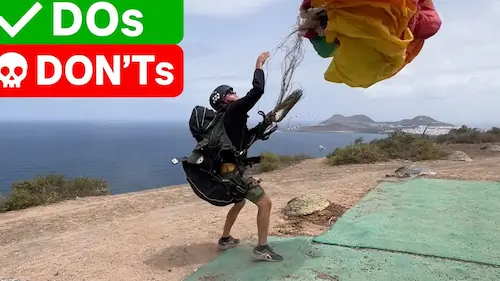Learn advanced paragliding technique
In this episode we analyze a flight technique with a practical focus: when to apply it, when to avoid it, and how to train it safely without punishing your gear. It includes key wind-control tips, ways to combine it with specific inflations, and frequent mistakes to avoid. This is the Throw and GO (Throw and go).
🔍 What will you see in this episode?
🔥 How to train the technique step by step without damaging your wing
🎯 When to use it (and when NOT to use it)
🌀 How to integrate it with cobra/side/asymmetric inflations
💨 Advantages over other methods in strong wind
🧩 Real cases and decision-making in takeoffs and after landings
⚠️ Attention, pilots
This technique is not intended as a standard takeoff method in all contexts, but as a specific tool for:
- Training in strong wind when traditional inflation becomes difficult
- Situations with limited space to take off
- When the wing cannot be placed on the ground for some reason.
🛠️ In the video
✅ Gear preparation and setup to maximize control
✅ Identifying the active side once it inflates
✅ Coordinated use of brakes and “A” risers to generate effective launches
✅ Tests with different setups: school wing, standard wing, and fast wings
📌 Tip of the day: practice with an old wing, wear gloves, and take care of your gear. Train smart.
🔔 Subscribe for more episodes where we explore tandem flight in depth and without makeup. More resources and personalized training at christianfernandezdelvalle.com.
❓ Frequently asked questions
What is the main goal of the technique shown?
To gain control in wind and in complex inflation situations, expanding the pilot’s toolkit to better decide when to take off and when to abort.
Is it suitable for all levels?
It is not recommended for beginners. First master classic inflation and, afterwards, advanced techniques like Throw and GO.
What risks exist?
Repeated training can damage the wing. Wear gloves, avoid line lockups, and maintain wide safety margins.
What equipment is best to practice with?
Start with a school or old wing before transferring it to your regular gear or tandem configurations.
When is it advisable to avoid this technique?
In extremely gusty wind or on unsuitable terrain.
